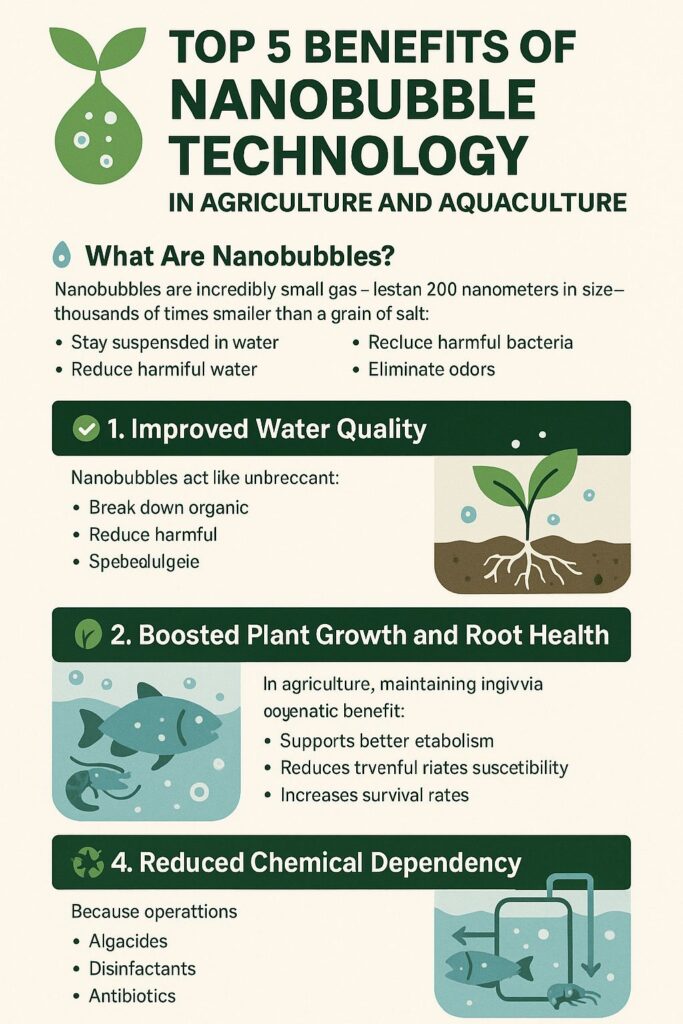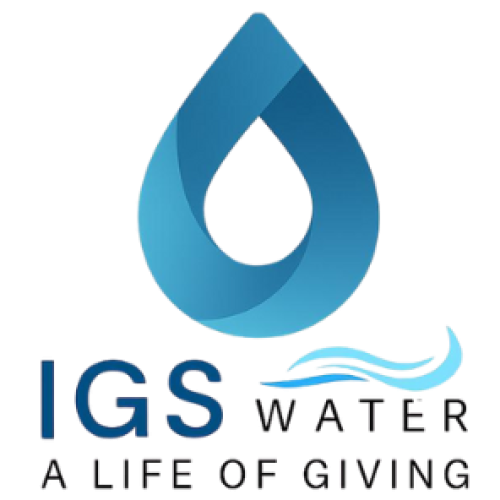Water is the heart of both agriculture and aquaculture. Whether you’re growing crops or raising fish, the quality of water directly affects your yields, efficiency, and long-term sustainability. One of the most exciting innovations transforming water use today is nanobubble technology.
But what exactly are nanobubbles, and how can they help your farm?
Let’s explore the top 5 benefits of nanobubbles and how they’re making a real difference in agriculture and aquaculture worldwide.
💧 What Are Nanobubbles?
Nanobubbles are incredibly small gas bubbles—less than 200 nanometers in size—thousands of times smaller than a grain of salt. Unlike normal bubbles, nanobubbles:
- Stay suspended in water for long periods
- Don’t float to the surface and burst quickly
- Increase dissolved oxygen levels
- Collapse under pressure to release energy and clean surfaces
Because of these unique properties, nanobubbles have powerful effects on water quality and biological health.
✅ 1. Improved Water Quality
Nanobubbles act like microscopic cleaners in your water. As they collapse, they generate tiny shockwaves and reactive oxygen species that help:
- Break down organic waste
- Reduce harmful bacteria
- Control algae growth
- Eliminate odors
This leads to clearer, healthier water for both plants and aquatic animals.
🌿 2. Boosted Plant Growth and Root Health
In agriculture, nanobubble-enriched water can increase the availability of oxygen around plant roots. This:
- Enhances nutrient absorption
- Supports stronger root development
- Speeds up germination
- Improves overall plant vigor
Growers using nanobubbles in irrigation have reported faster growth and higher yields, especially in greenhouse and hydroponic systems.
🐟 3. Enhanced Fish and Shrimp Health
In aquaculture, maintaining high levels of dissolved oxygen is critical. Nanobubbles provide a stable and efficient way to oxygenate water, which:
- Supports better metabolism in fish and shrimp
- Reduces stress and disease susceptibility
- Increases survival rates
- Lowers the need for antibiotics or harsh treatments
Some farms have even reported improved feed conversion ratios and healthier harvests after switching to nanobubble aeration.
♻️ 4. Reduced Chemical Dependency
Because nanobubbles naturally help clean water and suppress harmful microorganisms, farms can often reduce their use of chemicals like:
- Algaecides
- Disinfectants
- Antibiotics
- Fertilizers (due to better uptake)
This makes operations more eco-friendly, cost-effective, and compliant with environmental regulations.
⚙️ 5. System Efficiency and Long-Term Sustainability
Nanobubble systems are compact, energy-efficient, and easy to integrate with existing infrastructure. Over time, they help:
- Lower water consumption (through better water reuse)
- Reduce maintenance in tanks, pipes, and filters
- Promote sustainable farming practices
In short, nanobubbles make your system smarter, cleaner, and more productive.
🌍 Final Thoughts: Small Bubbles, Big Impact
Nanobubbles may be invisible to the eye, but their impact on farming is clear. Whether you’re growing lettuce in a greenhouse or raising shrimp in a pond, this technology offers real-world benefits: healthier plants and animals, better water quality, and fewer inputs.
As we move toward more sustainable agriculture and aquaculture, nanobubbles are quickly becoming a key tool for future-ready farms.


